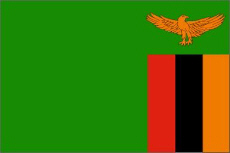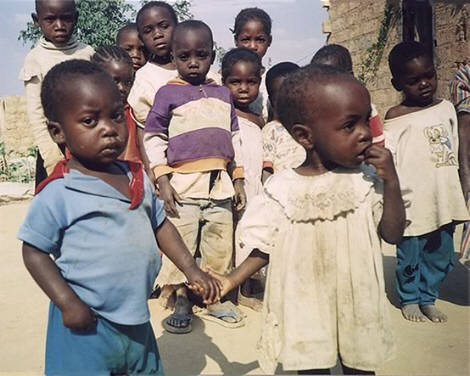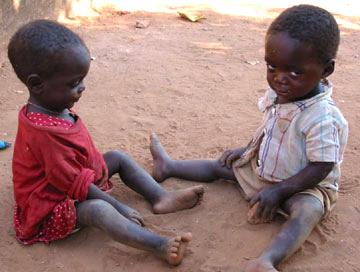| |


The Republic of
Zambia is a large country at the heart of sub-equatorial Africa.
More than a quarter of its 10.5-11 million people live in two urban
areas near the centre: in the capital Lusaka and in the industrial
towns of the Copperbelt. The rest of Zambia is very sparsely
populated, particularly the west and the northeast, and the majority
of people make their living as subsistence farmers. In its
four decades of independence, the Republic has found peace but not
prosperity. Zambia is today one of the poorest and least developed
nations on earth, and has a crippling national debt. Around
two-thirds of the population lives on less than a dollar a day. Zambia's problems have since the mid 1980s been compounded by one of the world's most devastating HIV and AIDS epidemics. The statistics alone are shocking:
One in every six adults is living with HIV 89,000 people died of AIDS in 2003
life expectancy at birth has fallen below 40 years, 630,000 children are AIDS orphans.
HIV has spread
throughout Zambia and to all parts of society. However, some groups
are especially vulnerable - most notably young women and girls. AIDS
has worst hit those in their most productive years, and, as families
have disintegrated, thousands have been left destitute.

Full country name: Republic of Zambia, Former: Northern Rhodesia
Capital: Lusaka
Area total: 752,614 sq km
Population: 11,502,010
People living with HIV/AIDS: 920,000 (2003 est.)
Major infectious diseases: degree of risk - VERY HIGH
food or waterborne diseases: bacterial diarrhea, hepatitis A, and typhoid fever
vectorborne diseases: malaria and plague are high risks in some locations
water contact disease: schistosomiasis
Language: English (official), major vernaculars - Bemba, Kaonda, Lozi, Lunda, Luvale, Nyanja, Tonga, and about 70 other indigenous languages
Religion: Christian 50%-75%, Muslim and Hindu 24%-49%, indigenous beliefs 1%
Government: republic
Climate: tropical; modified by altitude; rainy season (October to April)
Natural Resources: copper, cobalt, zinc, lead, coal, emeralds, gold, silver, uranium, hydropower
Major Industries: copper mining and processing, construction, foodstuffs, beverages, chemicals, textiles, fertilizer, horticulture
Imports partners: South Africa 46.2%, UK 14.2%, UAE 7.1%, Zimbabwe 6%
Illicit drugs: transshipment point for moderate amounts of methaqualone, small amounts of heroin, and cocaine bound for Southern Africa and possibly Europe; a poorly developed financial infrastructure coupled with a government commitment to combating money laundering make it an unattractive venue for money launderers

|
|

